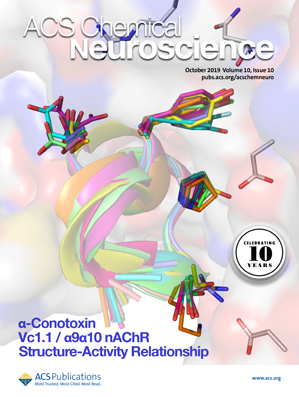双功能荧光探针用于神经元反式分化:一种有前途的神经再生研究治疗策略。
IF 4.1
3区 医学
Q2 BIOCHEMISTRY & MOLECULAR BIOLOGY
引用次数: 0
摘要
神经退行性疾病导致进行性神经元丧失,目前的治疗只能提供有限的症状缓解。为了克服这一点,正在探索各种策略。一种很有前景的方法是利用小分子将人间充质干细胞(hMSCs)转化为功能性神经元,同时使用荧光探针进行实时成像。因此,开发一种结合分化诱导和成像能力而不依赖生长因子的有前途的单一化合物可以显著推进神经科学研究中的神经再生治疗和诊断策略。本文章由计算机程序翻译,如有差异,请以英文原文为准。
Dual-Function Fluorescent Probes for Neuronal Trans-Differentiation: A Promising Therapeutic Strategy in Neuroregenerative Research.
Neurodegenerative diseases cause progressive neuronal loss, with current treatments offering only limited symptomatic relief. To overcome this, various strategies are being explored. One promising approach involves converting human mesenchymal stem cells (hMSCs) into functional neurons using a small molecule, alongside the use of fluorescent probes for real-time imaging. Therefore, developing a promising single compound that combines both differentiation-inducing and imaging capabilities without relying on growth factors could significantly advance neuroregenerative therapies and diagnostic strategies in neuroscience research.
求助全文
通过发布文献求助,成功后即可免费获取论文全文。
去求助
来源期刊

ACS Chemical Neuroscience
BIOCHEMISTRY & MOLECULAR BIOLOGY-CHEMISTRY, MEDICINAL
CiteScore
9.20
自引率
4.00%
发文量
323
审稿时长
1 months
期刊介绍:
ACS Chemical Neuroscience publishes high-quality research articles and reviews that showcase chemical, quantitative biological, biophysical and bioengineering approaches to the understanding of the nervous system and to the development of new treatments for neurological disorders. Research in the journal focuses on aspects of chemical neurobiology and bio-neurochemistry such as the following:
Neurotransmitters and receptors
Neuropharmaceuticals and therapeutics
Neural development—Plasticity, and degeneration
Chemical, physical, and computational methods in neuroscience
Neuronal diseases—basis, detection, and treatment
Mechanism of aging, learning, memory and behavior
Pain and sensory processing
Neurotoxins
Neuroscience-inspired bioengineering
Development of methods in chemical neurobiology
Neuroimaging agents and technologies
Animal models for central nervous system diseases
Behavioral research
 求助内容:
求助内容: 应助结果提醒方式:
应助结果提醒方式:


